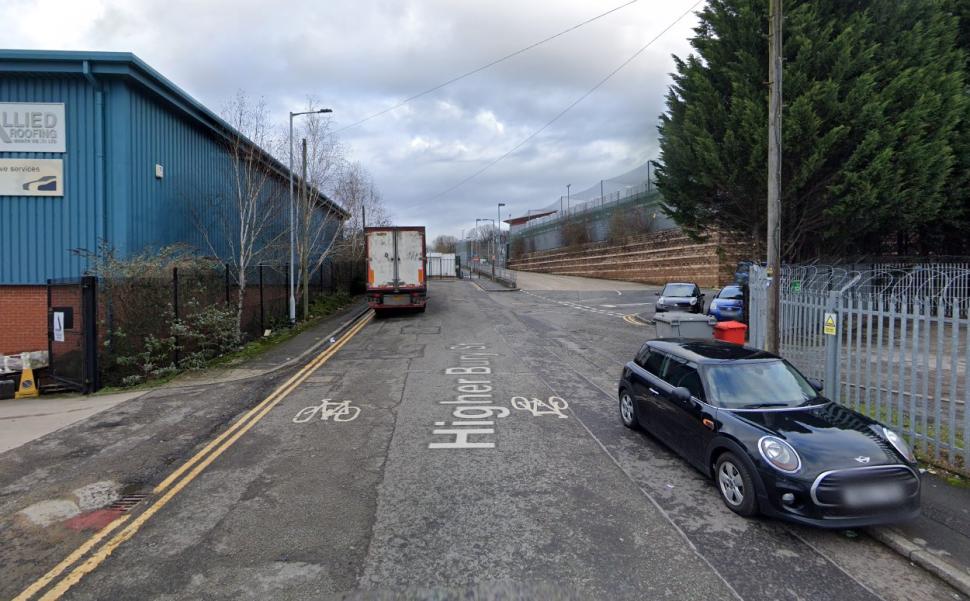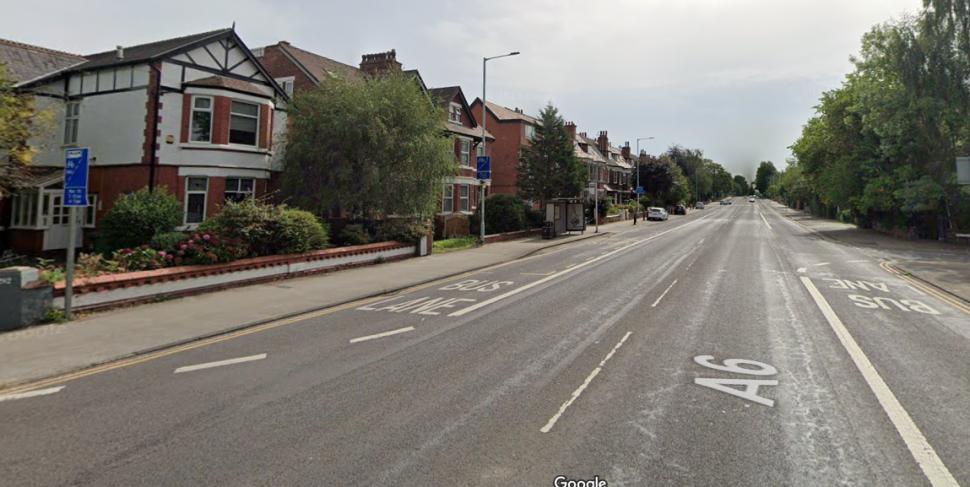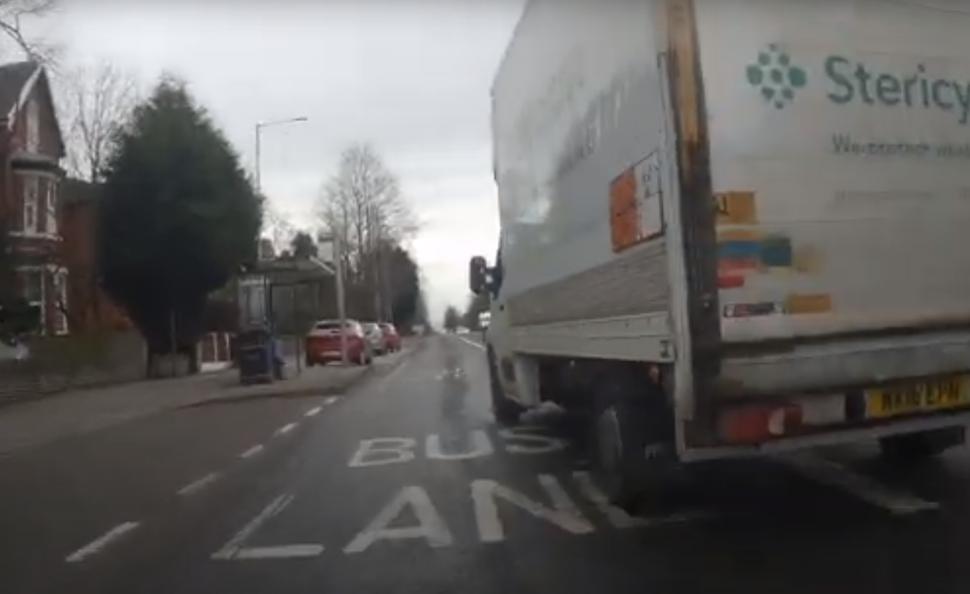- News
- Reviews
- Bikes
- Accessories
- Accessories - misc
- Computer mounts
- Bags
- Bar ends
- Bike bags & cases
- Bottle cages
- Bottles
- Cameras
- Car racks
- Child seats
- Computers
- Glasses
- GPS units
- Helmets
- Lights - front
- Lights - rear
- Lights - sets
- Locks
- Mirrors
- Mudguards
- Racks
- Pumps & CO2 inflators
- Puncture kits
- Reflectives
- Smart watches
- Stands and racks
- Trailers
- Clothing
- Components
- Bar tape & grips
- Bottom brackets
- Brake & gear cables
- Brake & STI levers
- Brake pads & spares
- Brakes
- Cassettes & freewheels
- Chains
- Chainsets & chainrings
- Derailleurs - front
- Derailleurs - rear
- Forks
- Gear levers & shifters
- Groupsets
- Handlebars & extensions
- Headsets
- Hubs
- Inner tubes
- Pedals
- Quick releases & skewers
- Saddles
- Seatposts
- Stems
- Wheels
- Tyres
- Health, fitness and nutrition
- Tools and workshop
- Miscellaneous
- Tubeless valves
- Buyers Guides
- Features
- Forum
- Recommends
- Podcast
news
 Higher Bury Street, Stockport (Google Street View)
Higher Bury Street, Stockport (Google Street View)“Nasty and unsafe” road plans that will force cyclists to use backstreets “overrun” with lorries referred to Active Travel England, as councillors slam “compromise” scheme that sees drivers “not losing out in any way”
A local councillor has called for plans to redevelop the busy A6 in Stockport – which include what he describes as “nasty and unsafe” proposals to remove the road’s painted cycle lanes and force cyclists to use backstreets “overrun” with HGVs – to be referred to Active Travel England for review, after fellow councillors argued that the so-called “compromise” scheme in fact means that “the losses are all for cyclists”.
However, Stockport Council, who have worked with Transport for Greater Manchester (TfGM) to put forward the proposals to build new bus lanes on Wellington Road North, a major road linking the town with Manchester’s boundary, have claimed that constructing new protected cycle lanes on the A6 would make the cost of the £15 million scheme “colossal”, while also arguing that there is “insufficient space”.
Along with the new bus lanes and the introduction of 20mph speed limits on some residential streets, the proposed scheme includes cycle routes on side streets to the east and west of the main road with crossing options, but will not provide any cycling infrastructure on the A6 itself, with one Green Party councillor also pointing out that the painted cycle lanes that currently exist on Wellington Road North will be removed as part of the project.
A6, Stockport
“I find it a very disappointing scheme,” Gary Lawson told the Manchester Evening News. “It’s referred to as a compromise scheme, but in a compromise everybody gives a little. Motorists are not losing out in any way here, buses are benefiting, the compromise is the losses are all for cyclists.
“We have a cycle lane at the moment along the A6 but that will go as I understand it, and cyclists will be sent here, there, and everywhere. Most cyclists want the most direct route and the safest route, and that would be a segregated cycle route along the A6.”
Meanwhile, a second Green councillor, James Frizzell, also expressed concerns that sending cyclists along quieter side streets would force people to make journeys on “lonely passageways at night” with “personal safety” risks.
This stance been echoed by independent councillor Asa Caton, who claimed that implementing cycle routes on back roads such as Lower Bury Street and Higher Bury Street (above) would force cyclists to ride alongside lorries and trucks using the nearby industrial parks.
“It’s an area that is overrun with heavy goods vehicles, delivery vehicles, industrial units, an abattoir,” said Caton, who has called on the Liberal Democrat-led local authority to pause the plans to allow councillors more time to gather feedback.
“You could make any number of improvements to that area and it would not be used for walking and cycling. You would still see people using the A6,” he continued.
“It just makes me shudder, the fact that we are trying to push people to use that route.”
The proposals were also condemned on social media by Caton’s fellow independent councillor Matt Wynne, who described the plans to send cyclists down streets frequented by lorries as “nasty and unsafe”.
“I have written to the Cabinet Member asking her to refer the plans to Active Travel England so they can reviewed,” Wynne said. “If officers are confident it’s a sound use of £15,000,000 they should have no issue with this second opinion.”
Replying to Wynne’s tweet, local cyclist Tom Jeffs said: “What officers have essentially said is ‘it isn’t worth spending money on people who’d like to cycle, we should spend it on people who drive instead’. In 2019 Stockport Council declared a climate emergency. Clearly the members there today are lying.”
Active travel group Walk Ride Greater Manchester also wrote to councillors last week urging the local authority to avoid making the scheme about “cycles vs buses” and noting that the A6 is “inaccessible to many” without protected cycle lanes.
Earlier this year, when the plans were first released, Walk Ride GM criticised the council’s failure to provide direct, protected infrastructure for people on bikes and its promotion of a non-direct ‘parallel’ route for commuter cyclists, which they said would force them onto quiet, “wiggly”, unlit roads which roughly double a cyclist’s travel time.
“Which would you prefer: cycling in a straight line in hazardous conditions, or taking a quieter but much more roundabout route? We don’t think either of those options are acceptable,” the group said.
“The point of walking and cycling infrastructure is to make active travel an easier, more attractive, more accessible option. NOT to simply keep pedestrians and cyclists out of the way of drivers.”
Cycling on the current A6
Responding to these criticisms, the council admitted that “a number” of people have asked for bike lanes on the A6 to be included in the £15m project, a scheme that is expected to take two years to complete and is using funding from the Greater Manchester City Region Transport Settlement.
However, the local authority claimed there is “insufficient space” for protected cycle lanes on the A6 and that they would cost a figure that is “absolutely colossal” and “beyond the budget or timetable”.
“We have looked at this, I don’t have a cost for what it would cost, because a large part of it would have to move every single kerb line on the A6 along the entire length of the scheme,” a council officer said.
“The cost in terms of stats diversions [utility services] could be absolutely colossal. It would require third party land to do it. That would almost certainly require a CPO [compulsory purchase order] process, because every time you get to a bus stop or junction you run out of space. The northern section of the corridor is actually narrower, so you have definitely run out of space.
“It would require a very large number of land acquisitions to do it, and it’s not just the cost, it’s the time, there is no way we could deliver this project in the timetable if we were to go along that route. It would be a completely different scheme, it would be considerably more expensive, and it would take a much longer period of time to build.”
Nevertheless, despite the council’s assertion that the scheme will continue to the business outline stage after 12 months of “significant design work”, the project as it currently stands has been thrown into doubt after Greater Manchester mayor Andy Burnham – in the wake of the widespread backlash to the plans – told BBC Radio Manchester that he will speak with the council’s leader to “look again” at the proposals for the “critical route”.
After obtaining a PhD, lecturing, and hosting a history podcast at Queen’s University Belfast, Ryan joined road.cc in December 2021 and since then has kept the site’s readers and listeners informed and enthralled (well at least occasionally) on news, the live blog, and the road.cc Podcast. After boarding a wrong bus at the world championships and ruining a good pair of jeans at the cyclocross, he now serves as road.cc’s senior news writer. Before his foray into cycling journalism, he wallowed in the equally pitiless world of academia, where he wrote a book about Victorian politics and droned on about cycling and bikes to classes of bored students (while taking every chance he could get to talk about cycling in print or on the radio). He can be found riding his bike very slowly around the narrow, scenic country lanes of Co. Down.
Latest Comments
- Mr Blackbird 6 min 38 sec ago
With 128 previous offences prior to hitting this cyclist, what is the likelihood of Morse (presumably not Inspector) modifying his behaviour?...
- bminchow 16 min 42 sec ago
Or maybe gibve it a few weeks until the TDU. But they should say something about it if they still have a tab.
- Backladder 21 min 44 sec ago
Shame about the Eddie Soens memorial race, I remember riding it back when on road races were limited to 40 riders, when the groups merged to a 200...
- Muddy Ford 37 min 3 sec ago
If I lived on that road in Dorset with the wands, I'd be more pissed off with the inconsiderate neighbour parking a fucking great daylight blocking...
- chrisonabike 2 hours 10 sec ago
It would have to be the police's cars... although stealing bikes from a police station does seem to fall in to the "low hanging fruit" bracket for...
- kingleo 2 hours 31 min ago
They left out The Telegraph and The Daily Mail.
- Hirsute 3 hours 14 min ago
13 vehicles crashed through my wall. https://www.bbc.co.uk/news/articles/clyvegw54e5o Time for some proper bollards!
- chrisonabike 3 hours 16 min ago
Perhaps it was one of those terrible military "accidents" where bio-weapons were released and went further than intended or lingered for too long? ...
- RoubaixCube 3 hours 27 min ago
I dont think it should be that narrow. I used to use an older Moon Meteor Vortex Pro - It was a great light for what it was but then I switched to...




Add new comment
6 comments
Except that nobody even blinks about spending £15 million on a motorway roundabout or a major junction. Nobody says that there is insufficient space when we need to build a bypass.
Only ever (it seems to me) when the problem is 'cycling'.
It also appears to be a pretty wide road, with a cycle lane on it. It's deeply unclear what the justification is for 'not enough space' without starting from an assumption that all the existing space has to be given over to motor vehicles, and that therefore a cycle land could 'only' be built by mounting a full scale road widening project.
Fixed it.
Obviously because it's a distributor (main artery) road there has to be space for motor traffic. And obviously there'll be lots of that. (Probably to try to get more people through the traffic they've put in bus lanes). Still, we've also got 2 wide lanes and extra space to make turning lanes at major junctions.
Oh - but this is the UK - so this is a "residential street" also. So in fact in places we've also "had to" find space for parking. And of course pedestrian refuges (can't have traffic lights / formal crossings everywhere because that would hold up all the ... traffic. So new olympic sport - dash to safety).
And of course it's a "place" (shopping street) also - so we need parking for that.
TBH this pattern is very common in the UK. "Organic growth" but where the growing has prioritised driving and parking.
Fixing that? Ultimately the confusion of road functions is the issue - which applies to the whole of the UK. That takes bigger, more expensive thinking (maybe even some large road building).
In this case even sympathetic politicians and planners probably couldn't touch the motor traffic to start with - we can't "evaporate it" without an "alternative". On that - we don't want to interfere with the buses...
Question is whether this scheme is just (very) sub-optimal or fundamentally compromised. So is it neither safe nor convenient?
No - I think you've misunderstood - the £15m is for the scheme without cycling provision.
With cycling provision it would be *hand waving* hundreds of times that...
Or in this case £15 million on some white paint for a bus lane and some signs to tell cyclists to go away!
You can add a zero to that and multiply it by 2 or 3.